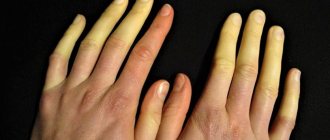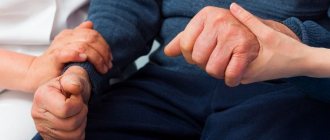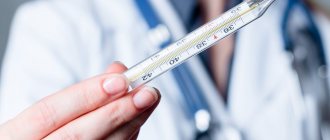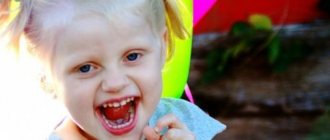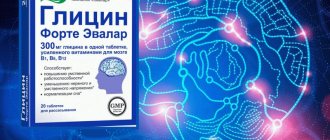Niemann-Pick disease belongs to a group of genetic diseases and is quite rare. The risk of developing this genetic disease increases in closely related marriages.
There are several variants of the development of the disease, which differ in the severity of manifestations. The three most common types of disease are:
- type A (classic form),
- type B (visceral form (main manifestations of the internal organs)),
- type C (chronic adolescent form).
Etiology
The main reason for the formation of this disease is a genetic defect of chromosomes 11 (type A), 14 and 18 (type B). As a result of this pathological change, the activity of the enzyme sphingomyelinase, which breaks down a type of fat such as sphingomyelin, is disrupted. This disorder leads to the accumulation of this type of fat and cholesterol in tissue macrophages, which leads to metabolic disorders.
The following factors can aggravate the pathological process:
- poor nutrition;
- excessive consumption of alcoholic beverages;
- almost complete lack of physical activity;
- tendency to gain extra pounds;
- stress, constant nervous tension;
- the presence of other diseases in acute or chronic form.
The disease occurs in both men and women. With the simultaneous mutation of several genes, the disease occurs with the formation of complications.
Niemann-Pick disease is a rare inherited disorder that affects the body's ability to metabolize fat (cholesterol and lipids) in cells, causing them to fail. The brain, nerves, liver, spleen, bone marrow and, in severe cases, the lungs may be affected.
People with this disease experience symptoms associated with the progressive loss of function of the nerves, brain, and other organs.
Niemann-Pick disease can occur at any age, but mainly affects children. Treatment aims to help people live with symptoms.
Signs and symptoms of Niemann-Pick disease
Symptoms of Niemann-Pick disease may include:
- clumsiness and difficulty walking;
- excessive muscle contractions (dystonia) or eye movements;
- sleep disturbance;
- difficulty swallowing and eating;
- recurrent pneumonia.
The three main types of Niemann-Pick disease are A, B, and C. Signs and symptoms depend on the type and severity of the condition.
- Some children with type A show signs and symptoms during the first few months of life.
- Those with type B may not experience any symptoms of the disease for many years and are more likely to survive into adulthood.
- People with type C may not experience any symptoms until adulthood.
Causes of Niemann-Pick disease
Niemann-Pick disease is caused by mutations in certain genes related to how the body metabolizes fat (cholesterol and lipids). Gene defects are passed from parents to children in a pattern called autosomal recessive inheritance—meaning that both the mother and father must pass on the defective form of the gene for the child to be affected.
Niemann-Pick disease is progressive and cannot be cured.
Types of Niemann-Pick disease
Types A and B are caused by a missing or faulty enzyme called sphingomyelinase. This affects the body's ability to metabolize fat, causing it to accumulate in cells. As a result, they die over time.
Type A occurs primarily in infants who have severe, progressive brain disease. There is no cure, so most children do not survive their first years of life.
Type B usually occurs later in childhood and is not associated with a primary brain disorder. Most people with type B live into adulthood.
Type C genetic mutations cause cholesterol and other fats to accumulate in the liver, spleen, or lungs. Ultimately, the brain is also affected.
Diagnosis of Niemann-Pick disease
Diagnosis of Niemann-Pick disease begins with a thorough physical examination, during which early signs may be detected, such as an enlarged liver or spleen.
Niemann-Pick disease is rare, and its symptoms may be confused with other disorders. To confirm the diagnosis, blood tests and biopsies are used to measure the amount of sphingomyelinase in white blood cells to confirm the diagnosis.
Other tests may also be performed, such as:
- An MRI of the brain may show loss of brain cells. But in the early stages of the disease, an MRI may show nothing because symptoms usually occur before brain cells are lost.
- An eye examination may show signs consistent with Niemann-Pick disease, such as difficulty moving the eyes.
- DNA testing of a blood sample can show specific abnormal genes that cause types A, B and C.
- Prenatal testing. An ultrasound can detect an enlarged liver and spleen caused by type C. Chorionic villus sampling is performed to confirm the diagnosis.
Treatment of Niemann-Pick disease
There is no cure for types A or B. For people with mild to moderate type C, a drug called miglustat may be recommended. Its effectiveness (improvement of neurological symptoms after regular use for an average of two years) was proven in an international study in which 92 people took part.
Physical therapy is an important part of treatment and helps maintain mobility for as long as possible.
References:
- Patterson MC. Overview of Niemann-Pick disease. https://www.uptodate.com/home. Accessed Oct. 31, 2020.
- Patterson MC, et al. Stable or improved neurological manifestations during miglustat therapy in patients from the international disease registry for Niemann-Pick disease type C: An observational cohort study. Orphanet Journal of Rare Diseases. 2015;10:65. https://ojrd.biomedcentral.com/articles/10.1186/s13023-015-0284-z. Accessed Oct. 31, 2020.
- Niemann-Pick disease. Merck Manual Professional Version. https://www.merckmanuals.com/professional/pediatrics/inheriteddisordersofmetabolism/Niemannpickdisease. Accessed Oct. 31, 2020.
On the Vikids platform you can:
Read similar articles
on the forum
Find medical institutions
Classification
There are three clinical forms of this disease:
- type A is the classic infantile form. Symptoms appear already in the first year of life and are characterized by neurological disorders (convulsions, difficulty swallowing, lack of reaction). In most cases, children die before the age of 3;
- type B – visceral form. Symptoms may appear between the ages of 2 and 6 years. The liver and spleen are most affected. The risk of death is much lower, many patients live to an old age;
- type C - adolescent non-acute form. Symptoms appear at the age of 2–5 years, becoming more intense at 15–18 years. Internal organs are affected, including the brain. Most often, patients die at 15–18 years of age.
The visceral form of the disease is considered the most favorable, since death is diagnosed extremely rarely, and the clinical picture is less pronounced.
What happens in the body with Niemann-Pick disease?
Niemann-Pick disease is a hereditary disease and develops due to mutations in genes that are responsible for certain body functions. With this pathology, the structure of the gene that is responsible for the synthesis of the enzyme sphingomyelinase is disrupted. Pick's disease is also called sphingomyelinosis, since the basis of all disorders is a defect in the substance of the same name.
The enzyme sphingomyelinase is involved in the breakdown of lipids and other products of fat metabolism. The main task of this substance is to separate a lipid called sphingomyelin into smaller particles. Since the required enzyme is secreted in insufficient quantities, or even not synthesized at all, the lipid sphingomyelin begins to endlessly accumulate in the body. The lipid accumulates mainly in the cells of the liver, spleen, lymph nodes and in the nerve cells of the spinal cord and brain.
As these substances accumulate, the cells enlarge and stop working properly. The accumulation of lipids in nervous tissue leads to their destruction and further transformation into scar tissue, which cannot perform the necessary functions.
Symptoms
Symptoms of Niemann-Pick disease
There is no general clinical picture for Niemann-Pick disease, since the symptoms will depend entirely on the affected organ or system as a whole.
When the brain is damaged, the following clinical picture is observed:
- speech disorder;
- convulsions;
- impaired coordination of movements;
- deterioration or complete loss of vision;
- hearing impairment, up to complete loss;
- decreased intelligence;
- a sharp change in mood, irritability gives way to complete apathy;
- dysphagia.
When the liver and spleen are damaged, the clinical picture may appear as follows:
- the stomach increases in size;
- loss of appetite;
- stomach ache;
- belching, heartburn;
- nausea, which is often accompanied by vomiting;
- increased bleeding due to mechanical injuries to the skin;
- yellowness of the skin.
When the lungs are affected, the following symptoms are observed:
- rapid breathing;
- dyspnea;
- blue discoloration of the nasolabial triangle;
- the patient often suffers from pulmonary infections.
In addition, regardless of the location of the pathological process, the following symptoms may be observed:
- muscle hypertonicity or hypotonicity;
- decreased level of intelligence;
- enlarged lymph nodes.
The presence of such a clinical picture requires mandatory consultation with a pediatrician, geneticist and immunologist.
Diagnosis of the disease
When complaining about an increase in the volume of the child’s abdomen, or delays in mental and physical development, the doctor asks the parents in detail about the appearance of symptoms, their frequency and connection with various external factors. The doctor carefully examines the child and, if he suspects he has a genetic disease, prescribes additional tests. Also, such a child must be shown to a geneticist.
Tests to confirm Niemann-Pick disease:
- biopsy of the liver, spleen and lymph node,
- laboratory blood diagnostics,
- genetic testing (detection of gene mutations).
Treatment
There is no specific treatment for Niemann-Pick disease. Therapy is palliative in nature and is aimed at inhibiting the development of the pathological process and improving the patient’s quality of life. For such purposes the following is used:
- blood transfusion;
- vitamin therapy;
- intravenous administration of protein solutions.
The following groups of drugs can be prescribed as symptomatic therapy:
- anticonvulsants;
- antidepressants;
- anticholinergic;
- antidiarrheal;
- antibiotics;
- bronchodilators;
- to normalize salivation, etc.
In addition, the patient’s diet, daily routine and compliance with all doctor’s instructions are important. In some cases, observation and treatment by a psychiatrist is required.
Pathogenesis of Niemann-Pick disease type C
Niemann-Pick disease type C (NP-C) is associated with a gene mutation in the following localization sites:
- NPC1 on chromosome 18q11-12;
- NPC1 on chromosome 114q24.3;
- NPC2 over 18 changed areas.
During diagnosis, patients are diagnosed with accumulation of unprocessed cholesterol, sphingomyelin, sphingosine and sphinganine; the level of such substances jumps 2.5 times compared to the level in the body of a healthy person.
Lipid accumulations negatively affect the size of individual cells, increasing them, which provokes cell death.
If we consider the autosomal recessive type of inheritance, then deviations appear:
- with a 50% chance of inheritance when the mutated gene is found in both parents;
- with a 25% probability the child is born without pathology;
- in 25% of cases, a child is born with a developmental disorder.
The defect becomes clinically pronounced if both autosomes of the main gene have a mutation.
What symptoms accompany the further development of the disease?
As the disease progresses, symptoms become more severe. Often a person has speech disorders - the vocabulary becomes more meager and over time is reduced to a few phrases that the patient repeats constantly. Naturally, this also affects writing. Signs of Pick's disease include aphasia, alexia, agraphia, etc.
In addition, in some cases, the disease is accompanied by the appearance of hypokinesis, loss of muscle tone, etc. Quite often, patients with a similar diagnosis suffer from obesity and also refuse to observe personal hygiene rules.
In any case, at later stages the patient needs help - the person is no longer able to take care of himself.
Prognosis of Niemann-Pick disease type C
Niemann-Pick disease has a poor prognosis. In the clinical form of type A and C, the patient rarely lives beyond 30 years. In this case, we are talking about an irreversible pathological process.
There are no specific methods of prevention. If future parents have had cases of this disease in their family, then before planning a child, you should definitely visit a geneticist. It should also be noted that the likelihood of having a child with Niemann-Pick disease increases significantly in marriage between closely related people.
The length and quality of a person’s life depend on the timeliness of therapeutic procedures. With their help, it is possible to stop the rapid progression or significantly slow it down, which helps to increase human life expectancy.
When should you see a doctor?
The first visit to the doctor should be at the moment when the couple is planning to have a child, if there are relatives in the family with Niemann-Pick genetic pathology.
It is also necessary to consult a geneticist if the child has signs of sphingomyelinosis pathology:
- The child is developmentally delayed
- The child has insufficient appetite, or its complete absence,
- The baby is not gaining enough body weight.
What are the forecasts?
Unfortunately, the prognosis for patients with this diagnosis is disappointing. Pick's disease is an extremely serious problem, and to date there is no way to stop the destruction of neurons. However, the use of appropriate medications and high-quality rehabilitation help slow down the process, maintaining the patient’s quality of life.
But, according to statistics, within 5 - 10 years the disease leads to mental and moral decomposition of the individual - patients develop dementia, marasmus, cachexia, etc. Such patients should be under constant supervision, preferably in specialized clinics, where they will be constantly monitored by medical staff.

